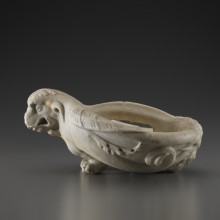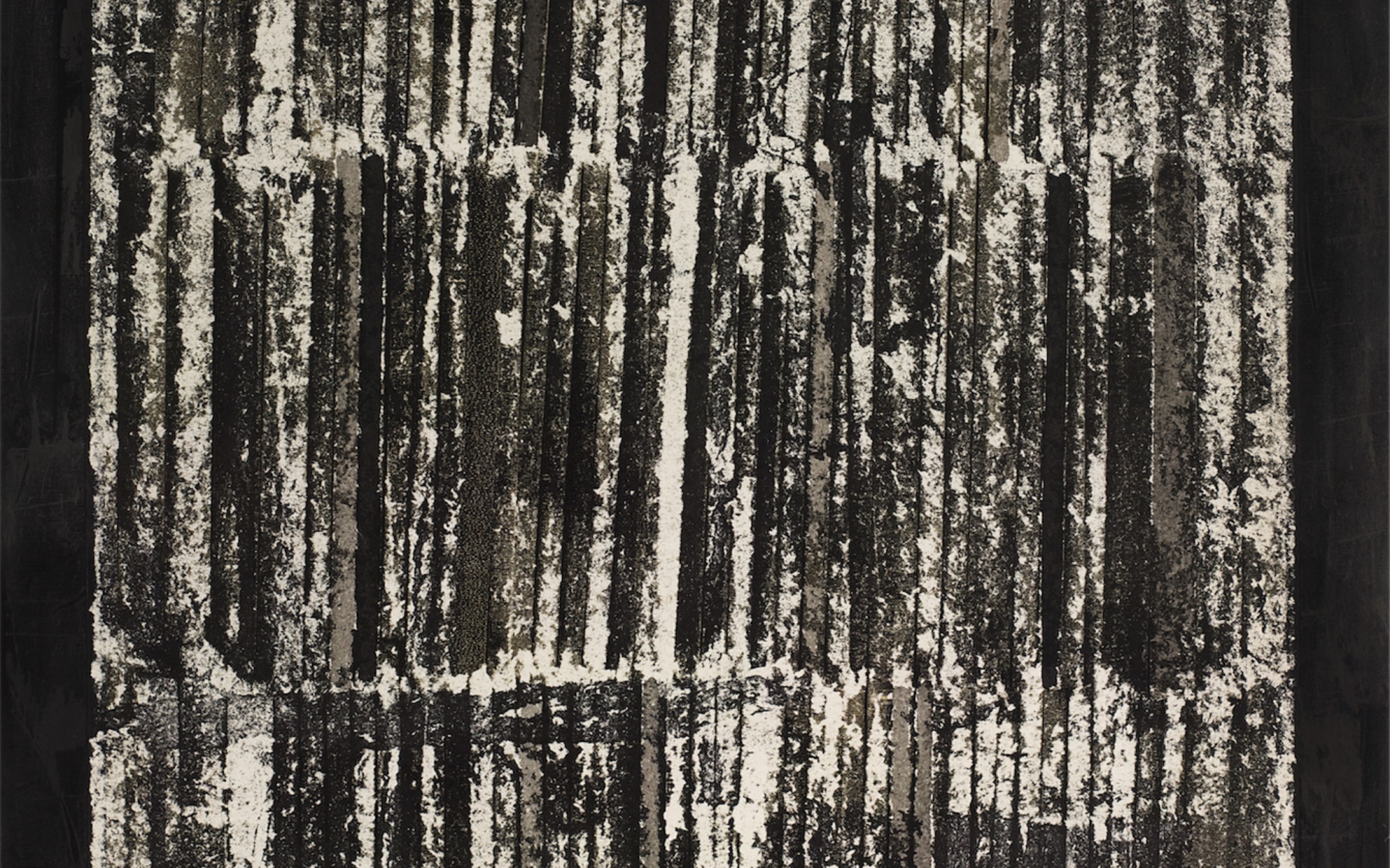
May 2021 Fine Arts
Arrachage by César
Opened in March 2021, at the Musée d’art de Pully, the exhibition Abstractions plurielles, 1950-19801 [Plural Abstractions] presents over seventy works by almost forty artists who have had an impact on abstract art in the second half of the 20th century. Curated by the Fondation Gandur pour l’Art, the exhibition taking from its collections is structured into eight sections and is spread over eleven rooms of the museum. It provides visitors with an insight into the evolution and different forms taken by European abstract art over almost four decades, with some works by North-American artists in contrast. In a somewhat surprising fashion, a work by César (ill. 1), one of the figures associated with Nouveau Réalisme, finds its place within this exhibition (ill. 2). His Arrachage from 1962 sits next to works on paper by Jean Dubuffet, Henri Michaux and Pierre Soulages, in a section entitled Expérimentations graphiques [Graphic Experimentations].
See the artwork in the collectionCÉSAR
Arrachage
1962
Ripped paper, coated with India ink, mounted on canvas
Signed “Cesar / Cesar” in the bottom right; annotated “Collec Jean Ferrero / nice / France” at the back of the canvas
120.2 x 80.2 cm
FGA-BA-CESAR-0004
Provenance
Jean Ferrero Collection, Nice
Galerie Dominion, Montréal
Demisch Danant, New York, 2018
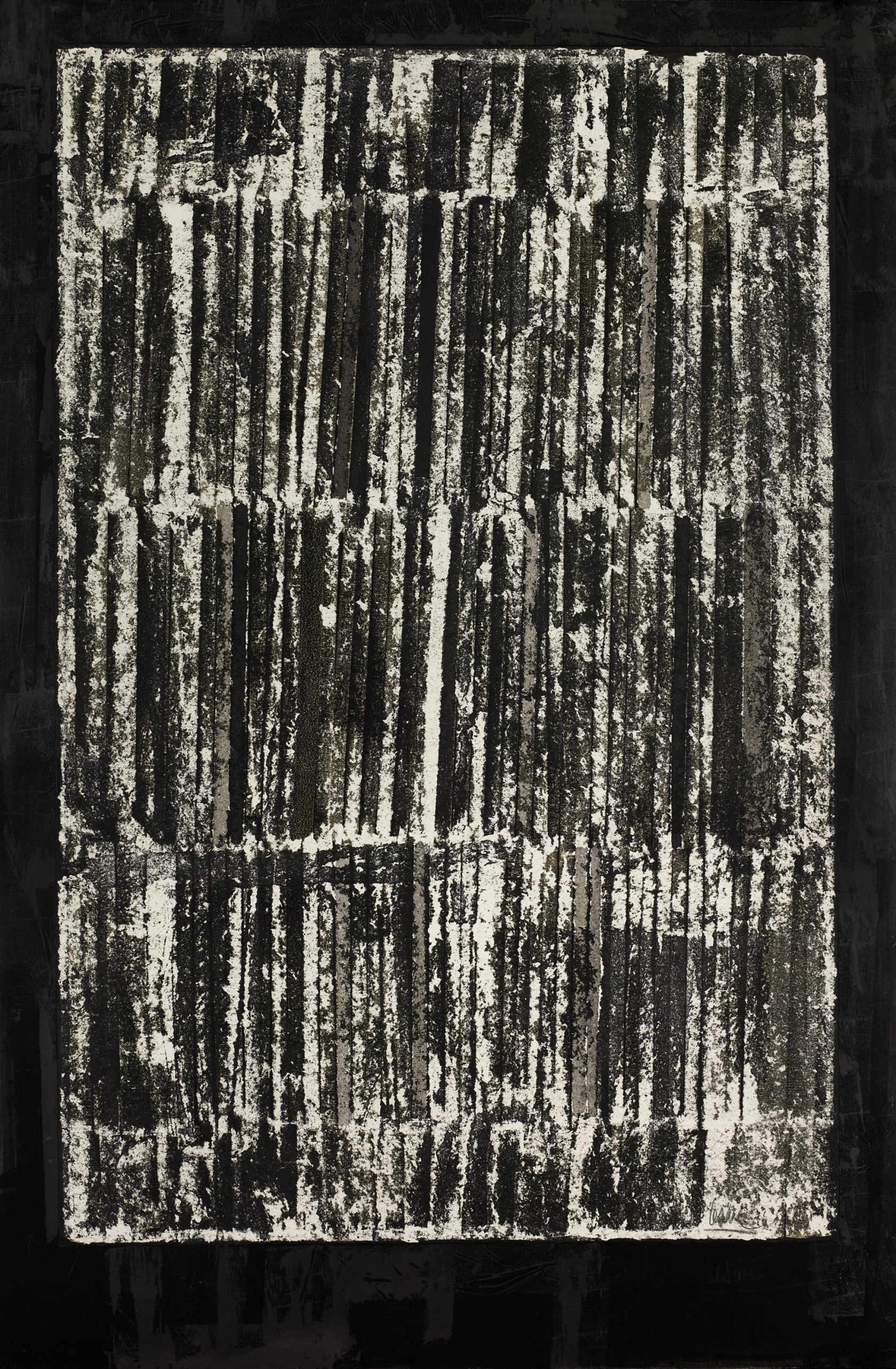

Arrachages
Better known for his welded iron sculptures (ill. 3), his compressions and expansions, of which the Foundation boasts several pieces since its first acquisition of César’s works in 2012, the artist also produced a number of works on paper2. He began his Arrachages [Tear-Offs] at an early point in his career, just prior to the mid-1950s, at a time when he was devoting the majority of his production to welded iron, during the so-called Figures, Animaux imaginaires [Imaginary Animals] and Reliefs3 period.
However, he only did two Arrachages between 1954 and 1955 before systematizing this technique in the late 1950s, producing most of these between 1959 and 1962. It appears to be during a stay in hospital when he was confined to his bed that he took to drawing to occupy his time and that he also experimented with the materials to hand4. For example, he made use of bandages and adhesive plasters, which he applied to sheets of paper covered in ink, before removing them. The tearing off of the plaster, taking part of the ink with it in the process, left delicate, mottled touches. In the preface to the catalogue of César’s first exhibition of paper works at the Galleria Apollinaire in Milan in 1962, the French art critic Pierre Restany underlined the coherence of the “tear-offs” series and noted that “one shouldn’t consider César’s drawings to be a minor, anecdotal or unusual episode in his career.”[] As surprising as it may seem, this body of work by the artist was absent from the last retrospective devoted to César at the Centre Pompidou in Paris in 2017-20185, contrasting with the exhibition at the Jeu de Paume two decades earlier, which presented a series of these, thereby fully including this aspect of his production into his visual research6. For the instigator of the Nouveau Réalisme movement, “the drawings from 1961 are décollages (tear-offs), in the full sense of the term. After covering the paper in ink, César applies pieces of sticky paper, which he almost immediately rips off. The imprint of the paper adds this characteristic motif, long and rectangular, which appears, depending on the inking procedure used, in either a light grey or a darker black.”7
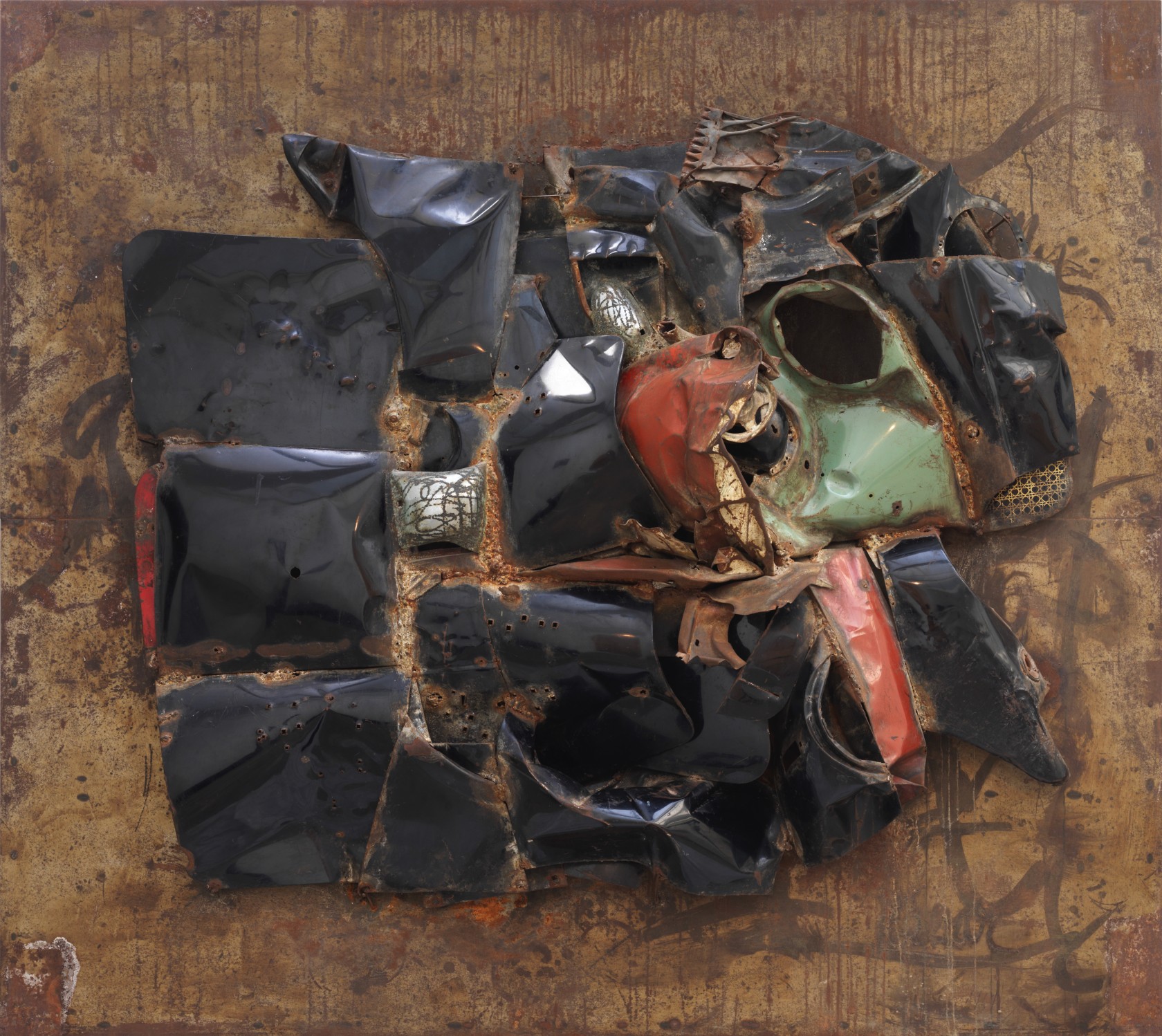
Appropriation of the material
If his peers like Raymond Hains, Jacques Villeglé and François Dufrêne were interested in posters, conveying an implicit critique on the advent of consumer society, César remained closer to abstraction with his works on paper from the early 1960s, like his friend Arman, whose abstract works known as Cachets, exhibited three years previously in the same Milan gallery, or the Allures d’objets may be said to depict the artist’s evolution prior to his Accumulations. However, unlike the torn posters of Hains, Villeglé and Dufrêne, which some refer to as “décollages” in that they ripped these posters down from the walls of the city, César’s Arrachages on the other hand, are of another genre, and are closer to sculpture than one might initially think. In the words of Pierre Restany, the Arrachages of the early 1960s are reminiscent of the welded iron pieces that the artist continued to produce. “Through this process of décollage, César remains in the technical universe of the sculptor. Strictly speaking, he is not drawing: he models his space in rapid, immediate, and definitive touches. Each successive gluing and tearing corresponds in the development process to the criteria of immediacy in the welding of a metal element, which is added to others and incorporated into a whole.”8 The 1962 Arrachage, for example, can be compared to the artist’s Agrafage (ill. 4) produced a year earlier. Made up of painted, varnished and stapled wooden strips on a plywood panel, this work partly uses the same language, even if the play on materiality brings it closer to sculpture. Through his works on paper, César seems to continue his plastic reflections conceived earlier, by modelling the two-dimensional space of the paper. Indeed, these “décollages of previously inked glued papers, by the characteristic repetition of rectangular motifs, evoke the previous series of Plaques from 1959, remarkable sculptures through their tendency towards two-dimensionality.”9
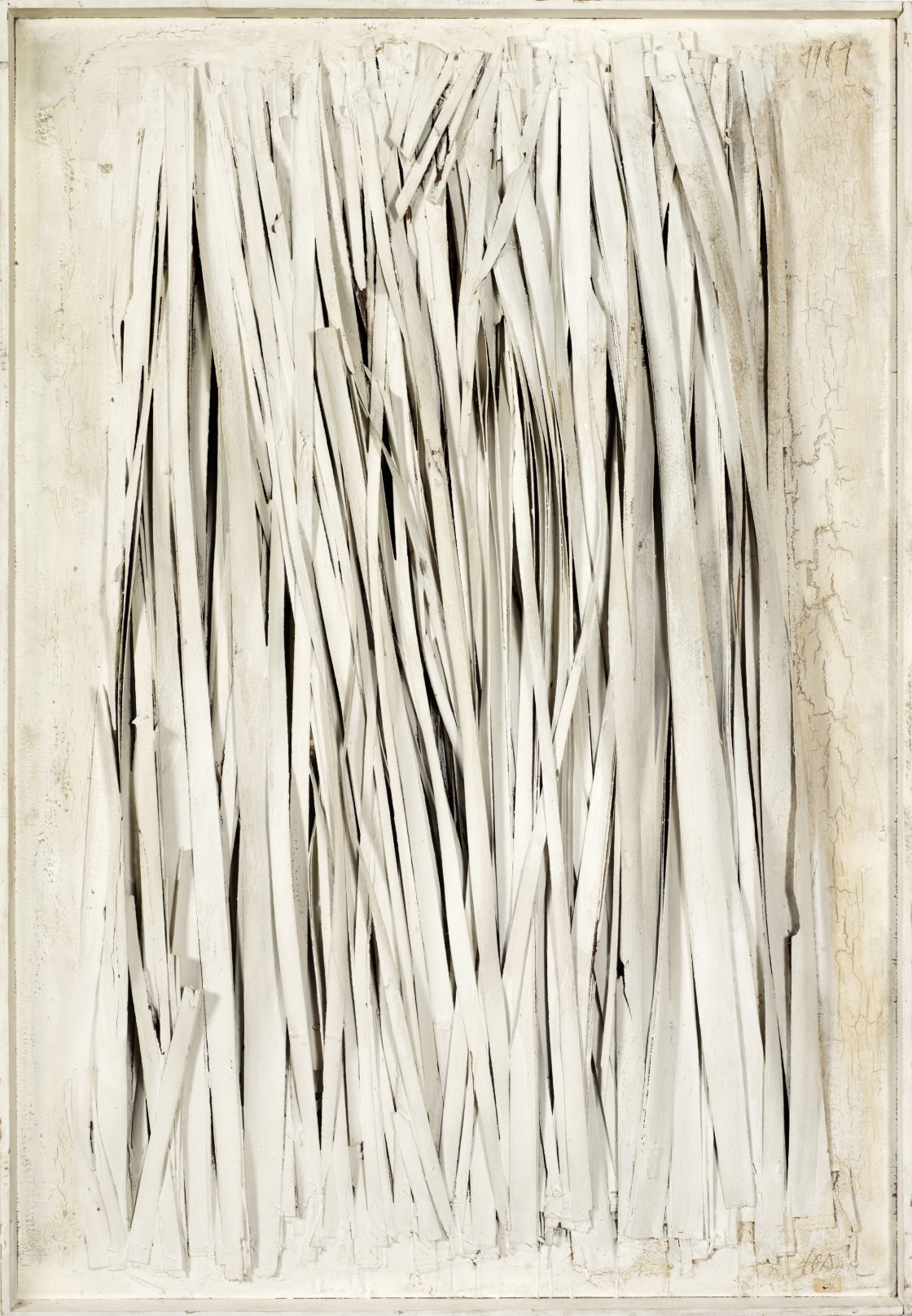
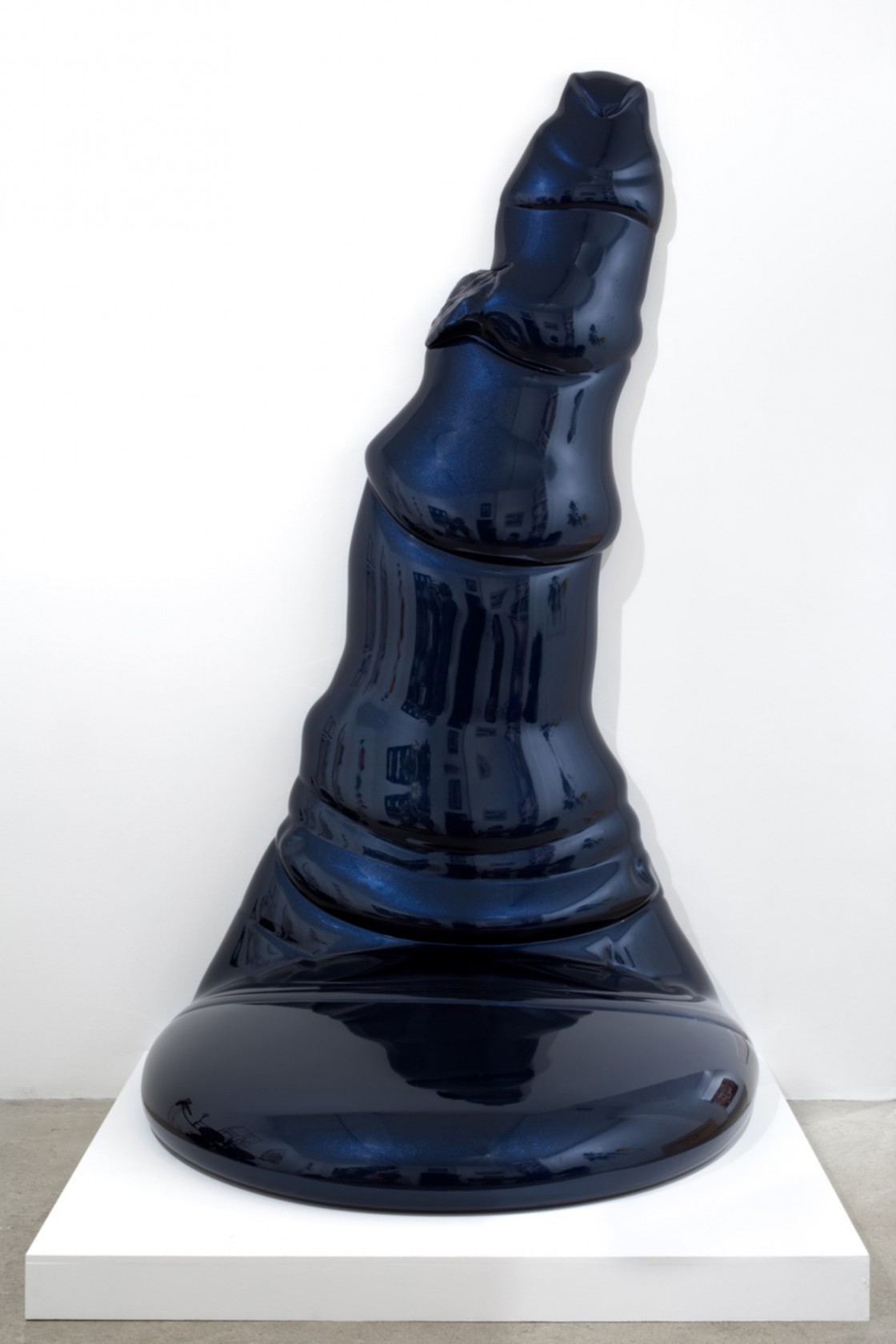
While the Plaques seek flatness through an apparent three-dimensionality, the Arrachages find depth on a flat surface. These paper works are not sketches done for potential sculptures, but truly original attempts to approach the pictorial through the methods of sculpture. For Pierre Restany, who rightly points out, “[t]he drawings of sculptors always have something of the confidential. This is what makes them so charming: the secretive but also the ambiguous aspect. Because in the end, drawing for a sculptor is a kind of challenge which consists in transposing problems of the order of the three-dimensional into the universe of the two-dimensional.”10
Like all of César’s artistic practice, from his welded iron pieces to his expansions (ill. 5), his Arrachages are an example of experimentation. Far from the appropriation associated with his compressions, they express the artist’s constant desire to create. In fact, César never stopped developing his technique or using new materials. For him, welding, compressing, tearing and expanding were all different ways of pushing the limits of his formal research and of developing his own pictorial and sculptural language.
Yan Schubert
Curator of the Fine Arts Collection
Fondation Gandur pour l’Art, Genève, May 2021
Notes and references
- This is the title of the catalogue accompanying the exhibition Calder, Soulages, Vasarely… Abstractions plurielles, 1950-1980, Collection de la Fondation Gandur pour l’Art, presented from 2 March to 21 November 2021.
- Durand-Ruel, Denyse, César, Catalogue raisonné, volume 1, 1947-1964, Paris, Éditions de la Différence, 1994.
- A work from this period called Panneau relief (1955) has just joined the Museo Nacional Centro de Arte Reina Sofía in Madrid on long-term loan, along with approximately fifteen other works belonging to the Foundation.
- See the exhibition booklet by the Gallery Demisch Danant published for the Salon Art + Design in New York, 2017.
- See Blistène, Bernard; Ajac, Bénédicte (ed.), César, La rétrospective, exhibition catalogue [Paris, Centre Pompidou, 13.12.2017 – 26.03.2018], Paris, Éditions du Centre Pompidou, 2017.
- See César, exhibition catalogue, [Paris, Galerie nationale du Jeu de Paume, 10.06 – 19.10.1997], Paris, Gallimard; a Jeu de Paume publication; Réunion des musées nationaux, 1997, p. 96-101 especially.
- Restany, Pierre, Cesar et le dessin, op. cit., n. p.
- Idem.
- Restany, Pierre, Les Nouveaux Réalistes, Un manifeste de la nouvelle peinture. Paris: Éditions Planète, 1968, p. 147.
- Restany, Pierre, Cesar et le dessin, op. cit., n. p.
Bibliography
César, expériences graphiques, exhibition catalogue [César, les inédits, Collection Jean Ferrero, Cannes, Centre d’art La Malmaison, 02.07 – 27.09.2015], Marseille, Arnaud Bizalion éditeur, 2015, col. repr. p. 14
Durand-Ruel, Denyse, César, Catalogue raisonné, volume 1, 1947-1964, Paris, Éditions de la Différence, 1994, listed p. 376 and 441, no. 493, b&w repr. p. 377
Schubert, Yan (ed.), Abstractions plurielles 1950-1980, exhibition catalogue [Pully, Musée d’art de Pully, 02.03 – 21.11.2021], Genève, Fondation Gandur pour l’Art, 2021, col. repr. p. 57






